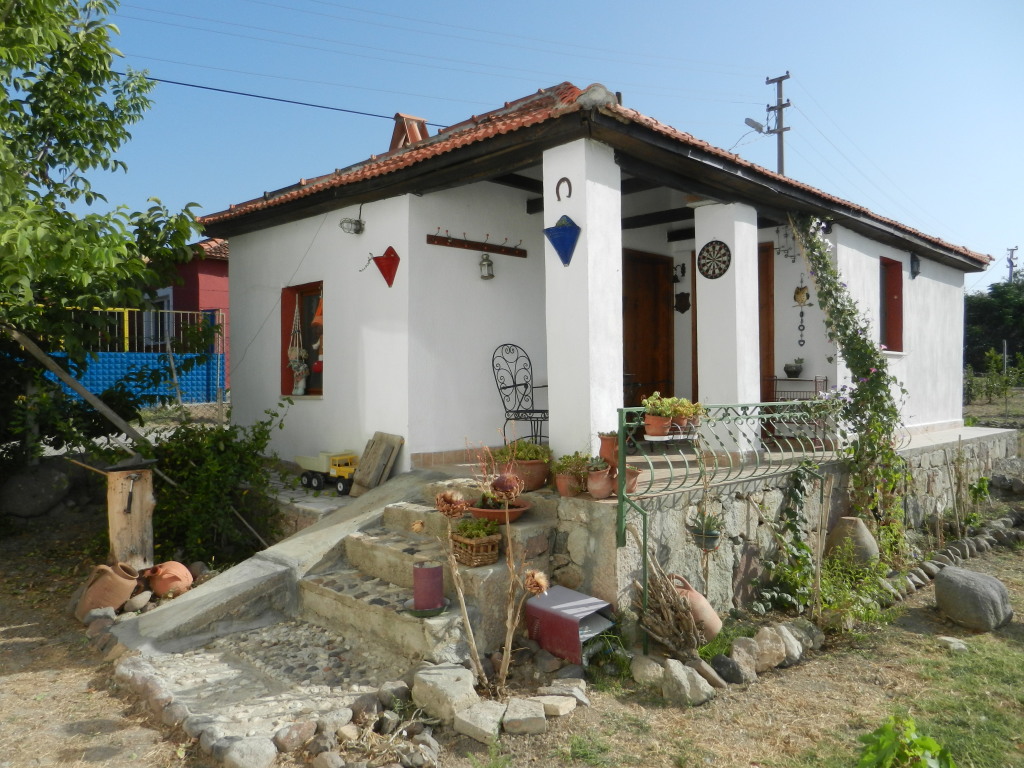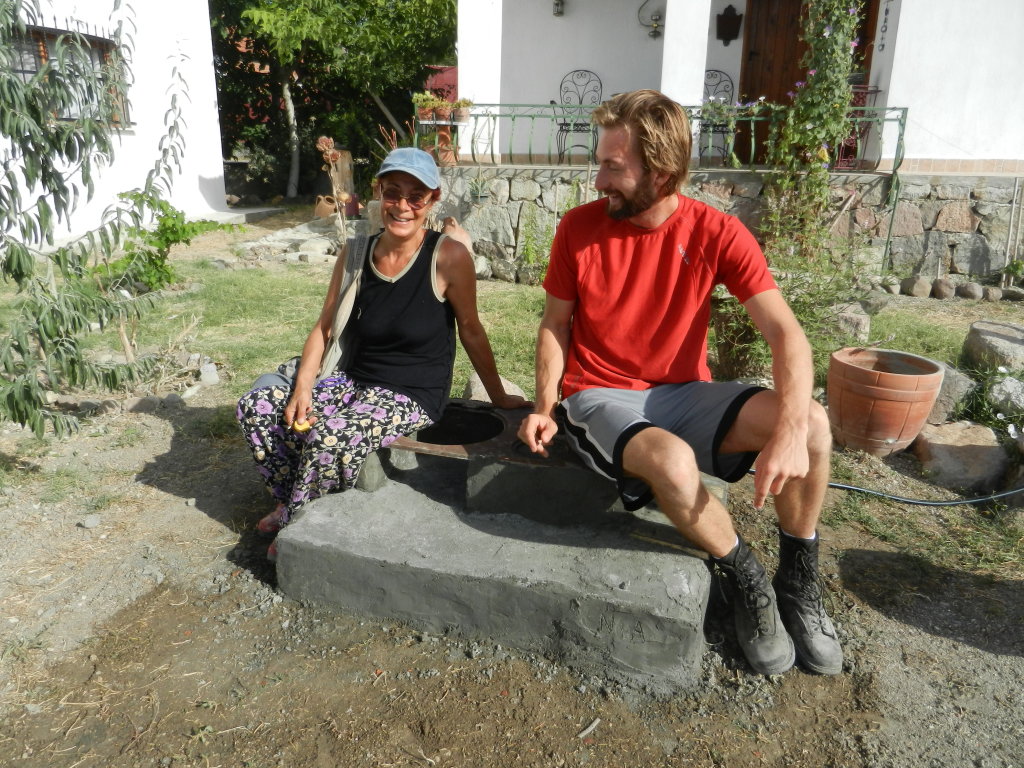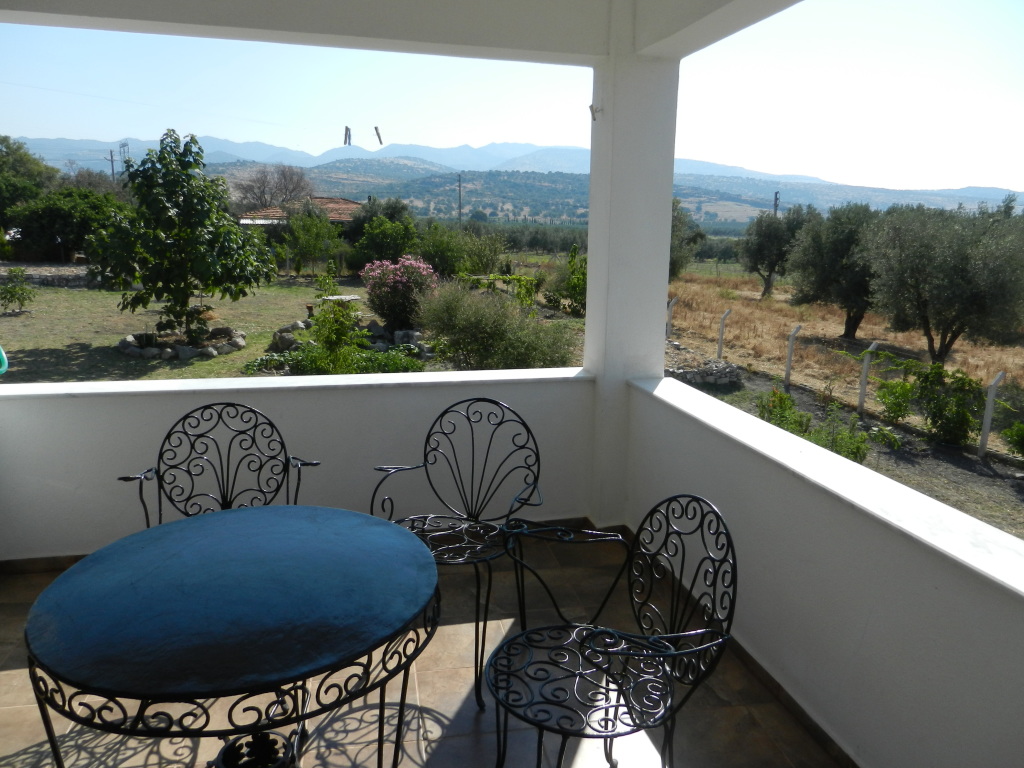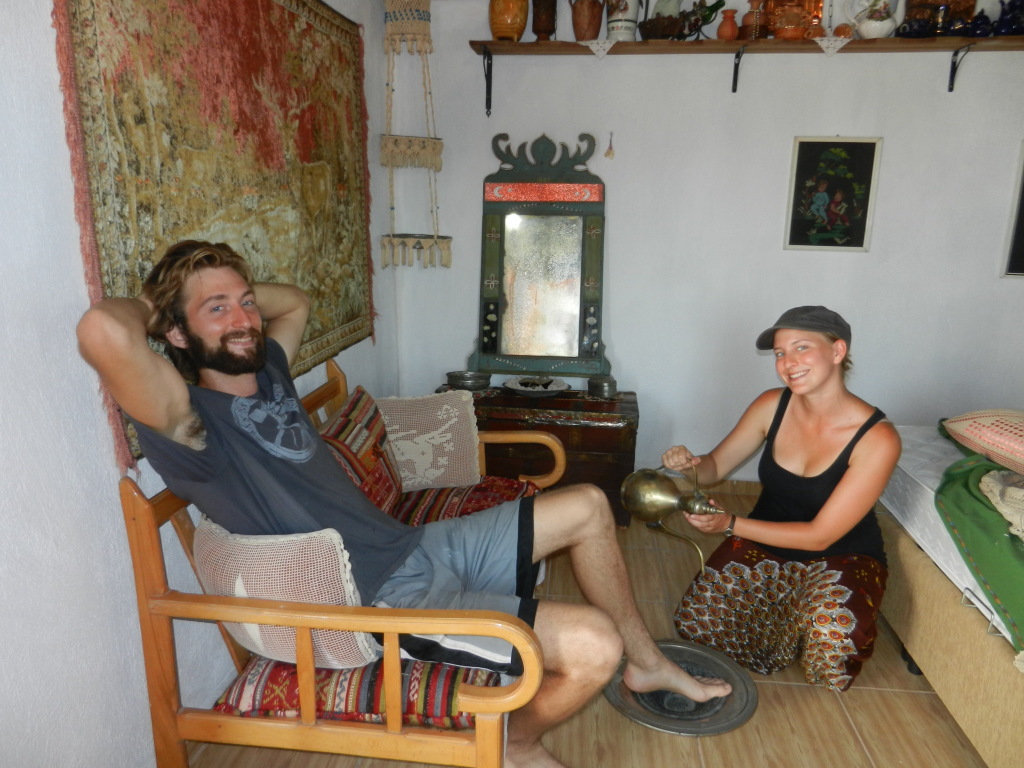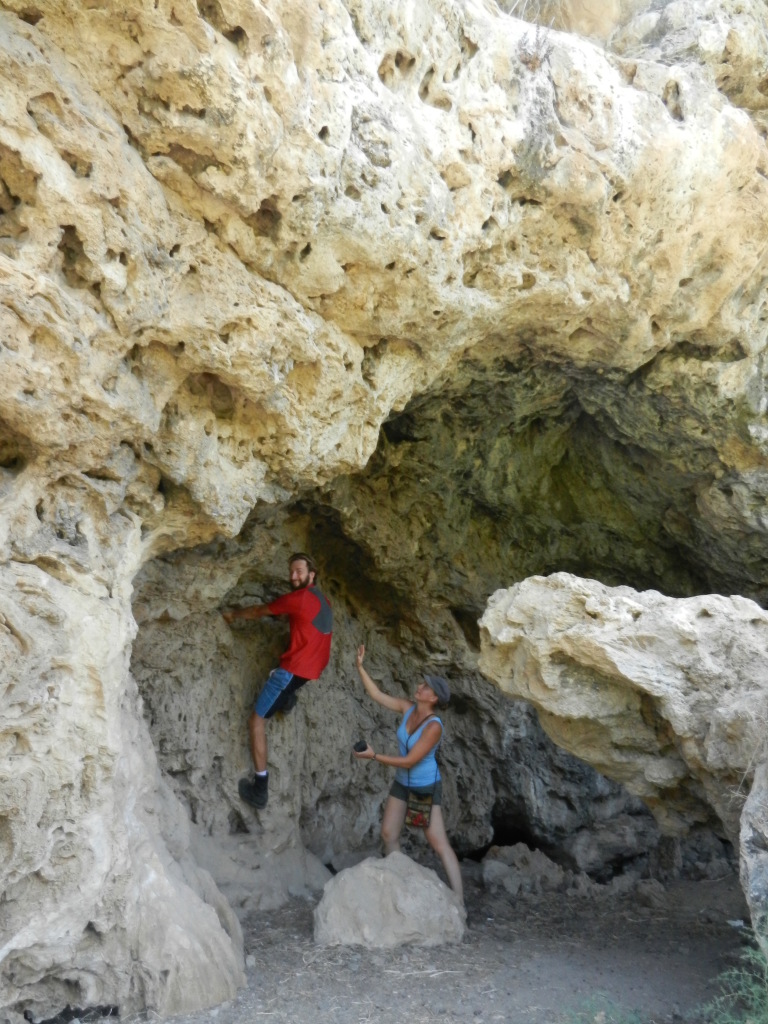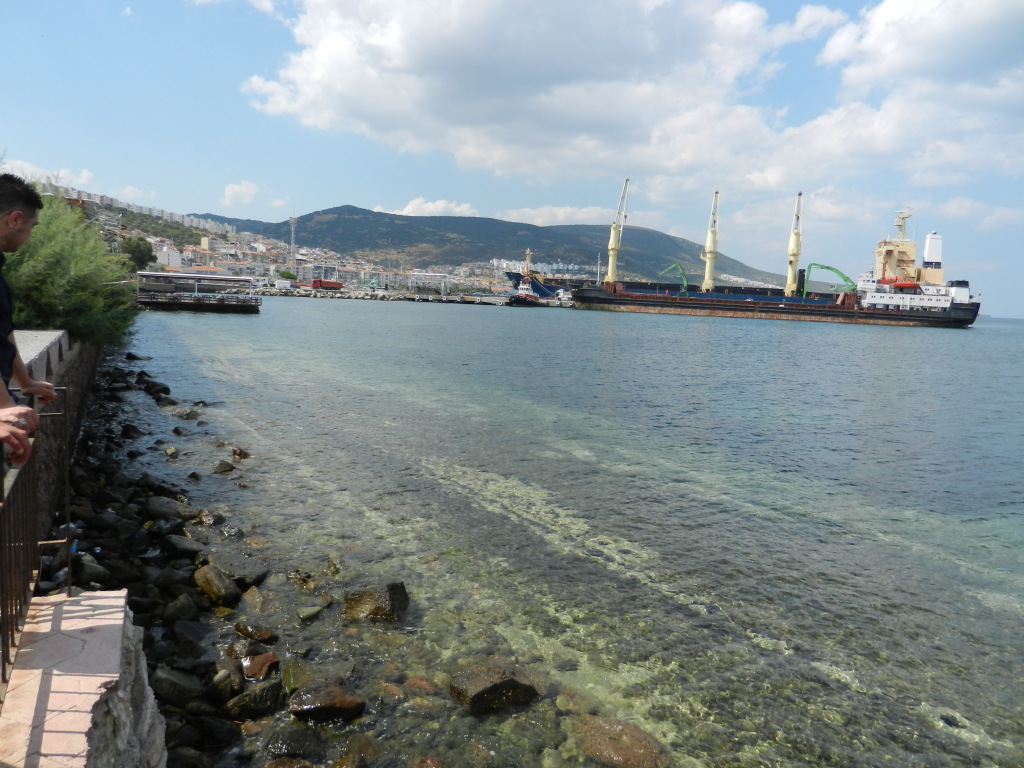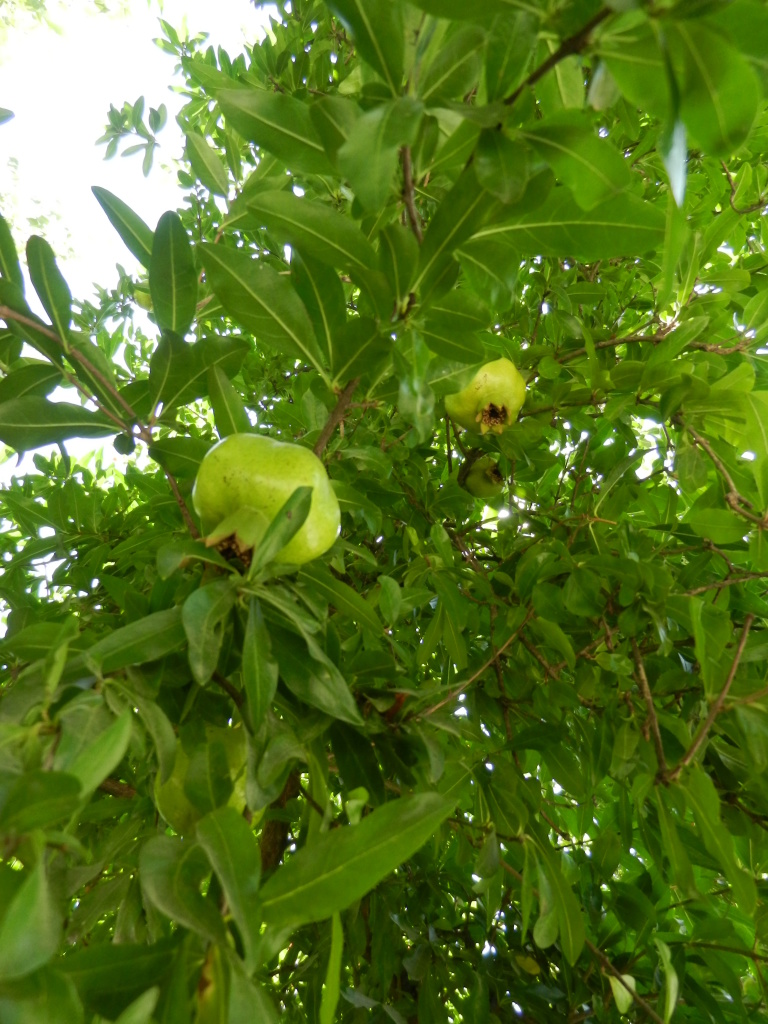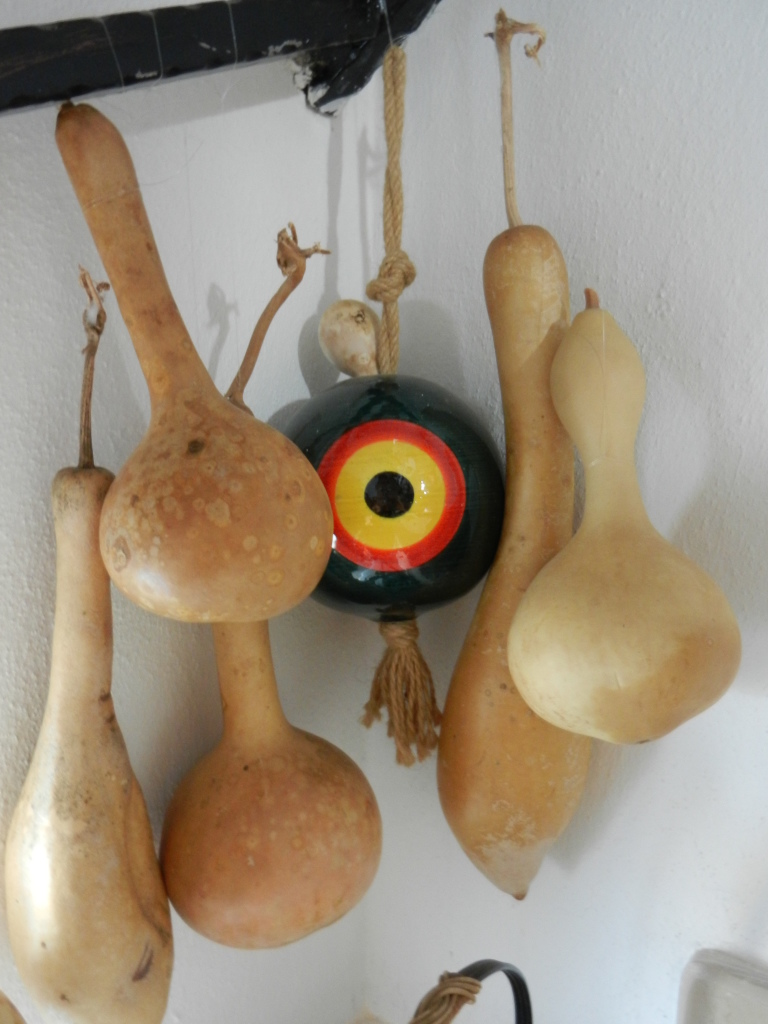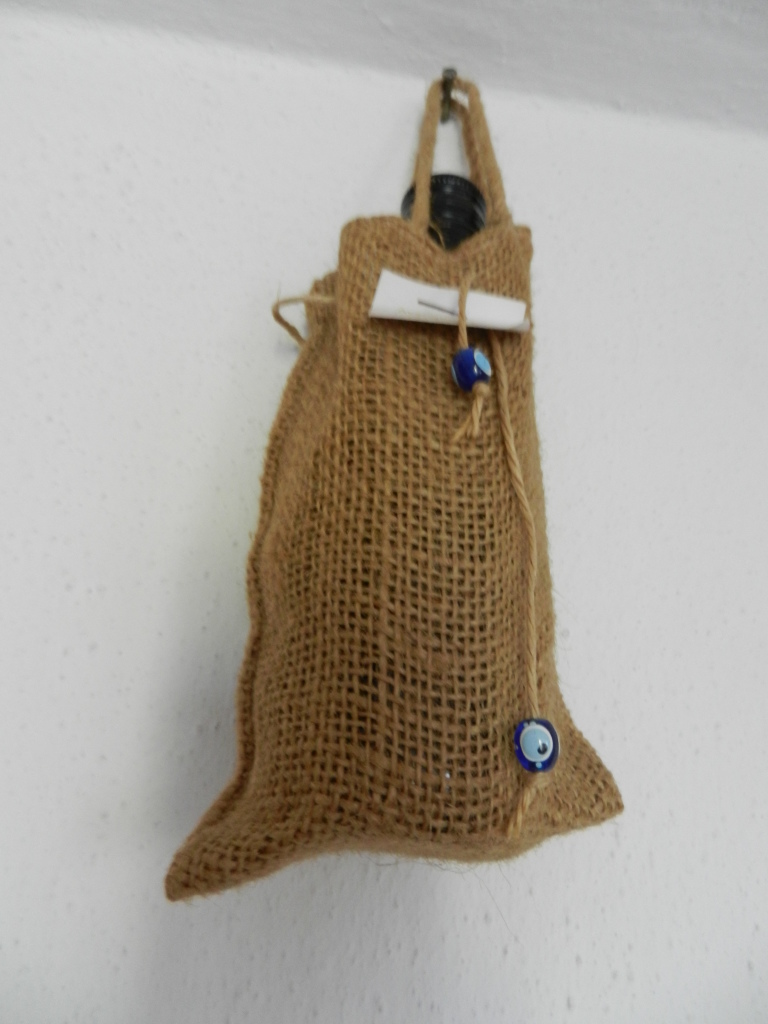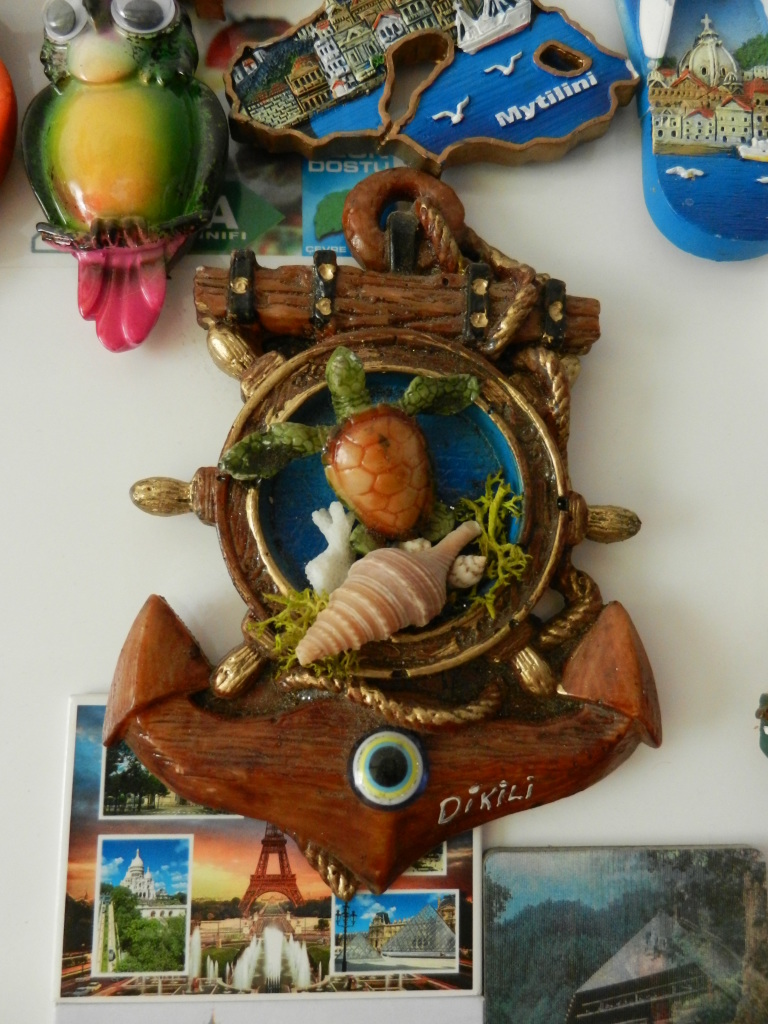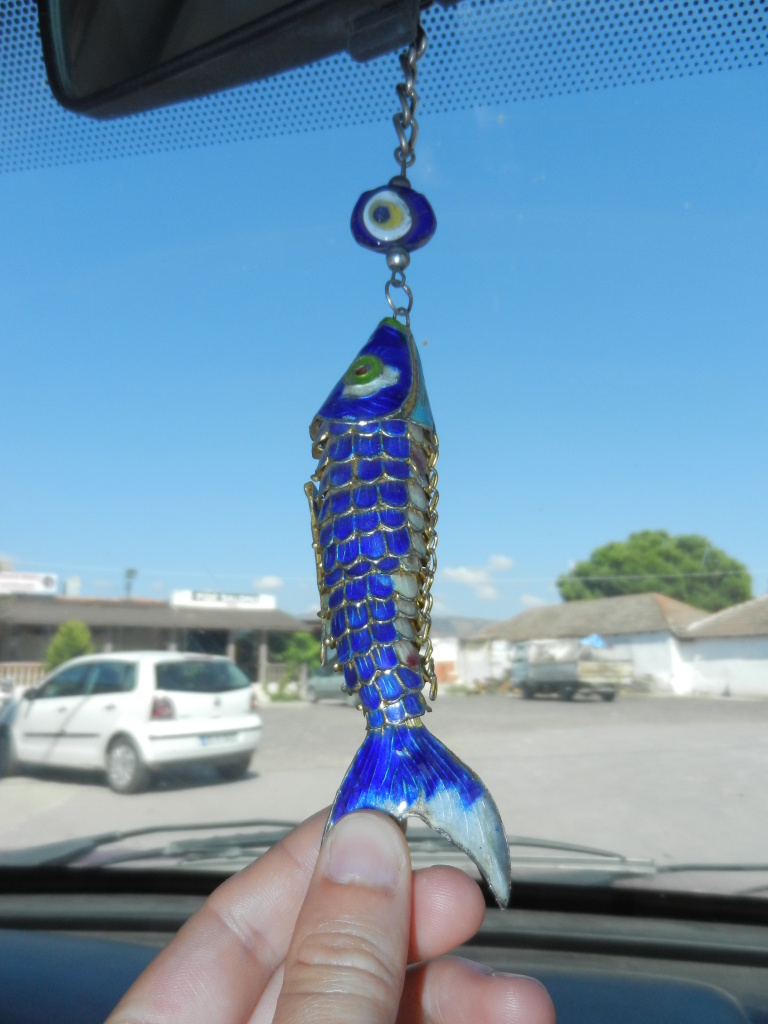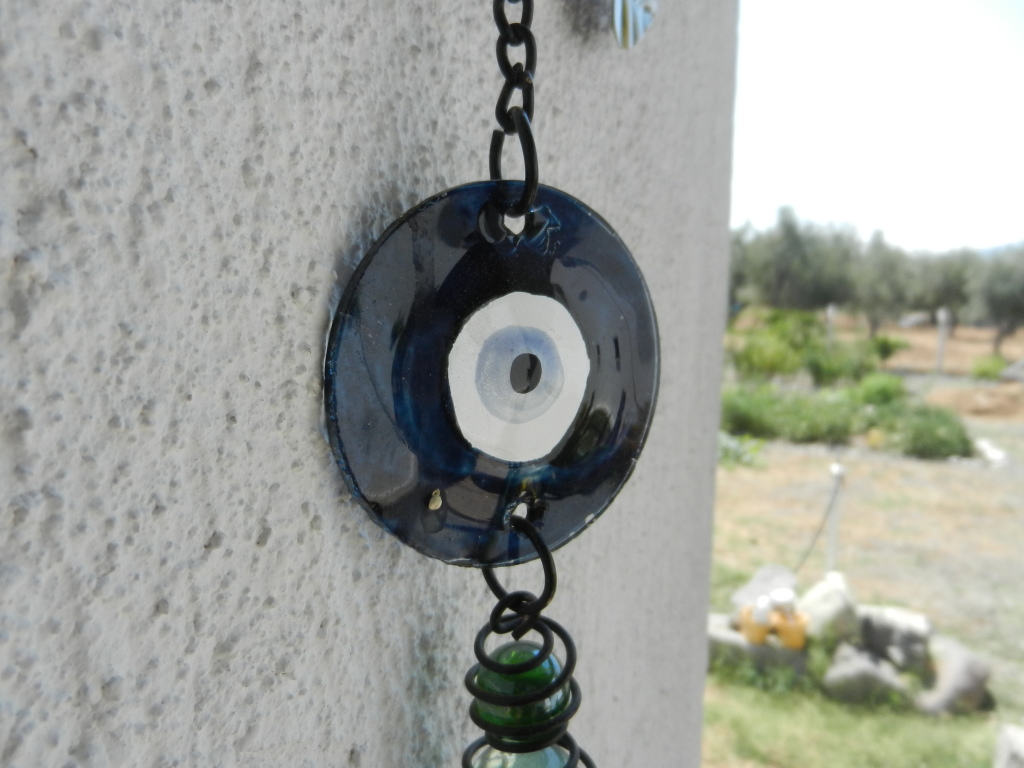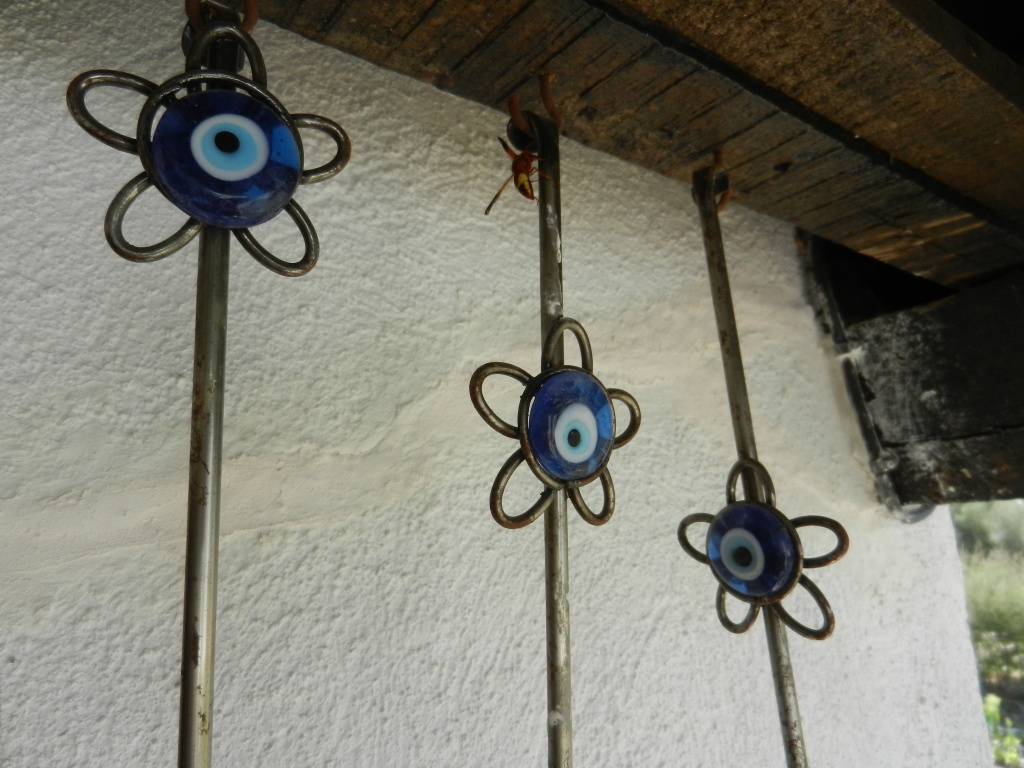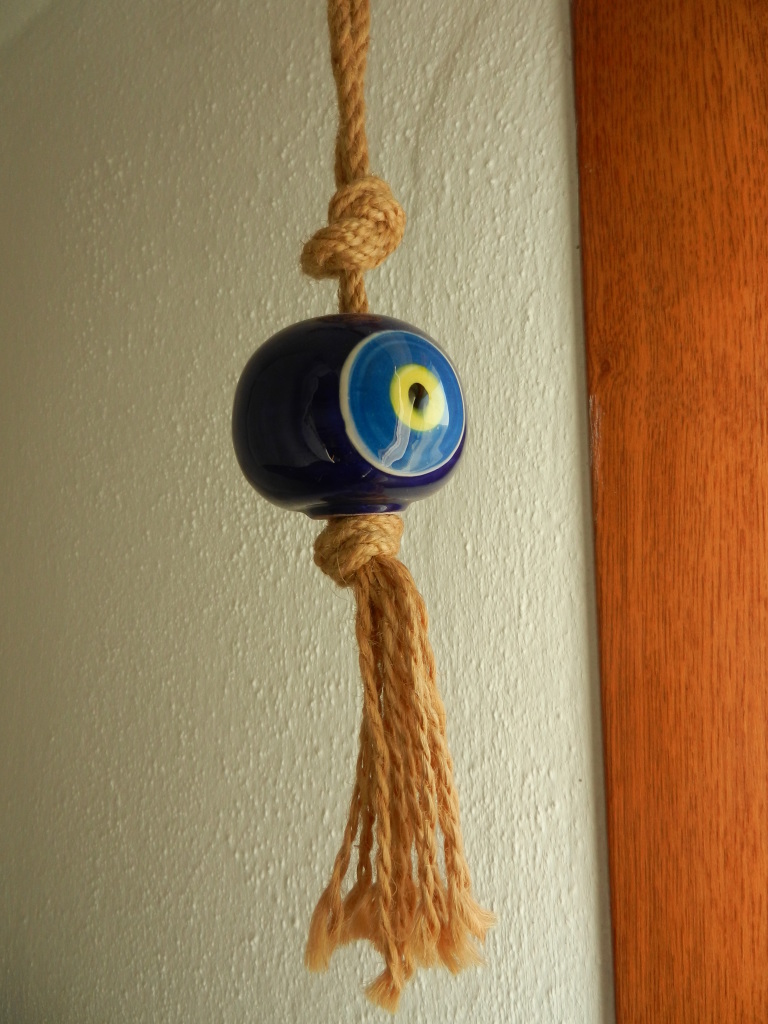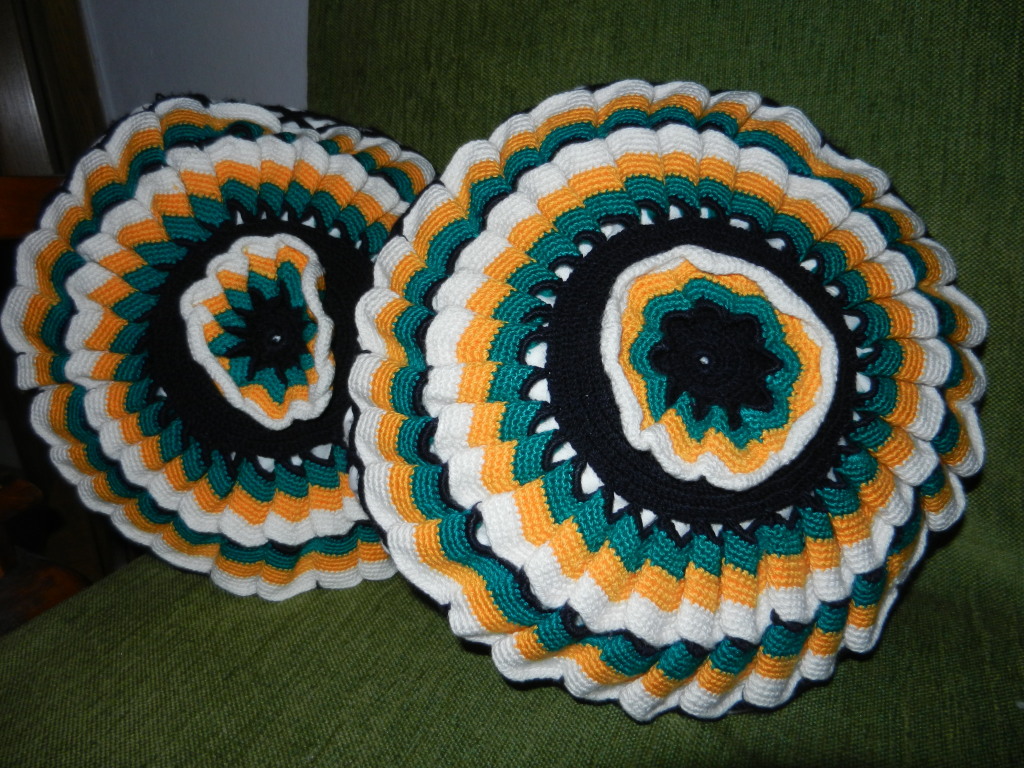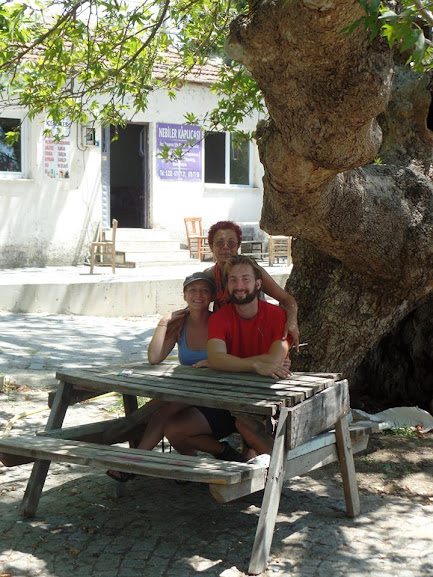We were planning on slowly making our way north along the Aegean coast, stopping at two Workaway hosts and a couple historical sites along the way. Our first host in Turkey was Hülya, a wonderful Turkish woman living near the summer resort town of Dikili. Days were blazing hot; I felt like I was sweaty from sunrise to sunset. Lucky for us, Hülya organized the day so that we worked a couple hours early in the morning before it got too hot and then had a break until the evening when it got cool(ish) again. Most of our first week was spent weeding out Hülya’s large yard and mulching the plant beds with a couple of volunteers from the United States. The second week we were on our own helping to clean and patch up the adorable guest cottage Hülya had renovated and build a new oven to use on warm summer nights.
When we took our afternoon breaks, we were never short on having something fun to do. After an amazing meal we would head out to explore local farms, hiking trails, the beach, or even just head into Dikili for the day. I had no idea so many fruits were grown in Turkey! Everywhere you looked were pomegranates, limes, lemons, figs, walnuts, peaches, pears, apples, olives, ah!! A dream of mine is to have a property with fruit trees all over, and I love how that is the norm in Turkey, though I was super sad the pomegranates weren’t going to be ripe while we were there.
We were visiting just in time for Ramazan Bayramı, or “Sugar Feast”, a three-day holiday following the month of Ramazan (also called Ramadan). Ramazan is a month-long fasting period in the Islamic religious calendar, and by fasting I mean no smoking, no sex, and no food or liquid must pass the lips of a fasting individual from sunrise to sunset. In the area we were staying many of the Muslims took a more relaxed approach to religion, however, there were still those observing the traditional fasting period. Considering most days were running between 30 and 38°C and even swimming is risky for those fasting during Ramazan (not a single drop can pass your lips), I was stunned that anyone could manage. Speaking to a few of the people we met who were fasting, their reasons were inspiring. One man, surrounded by family members who were not fasting, said he had decided to fast as a means to practise and improve his self-control. This would apply to discipline over himself and his actions, therefore to how he conducted himself in all aspects of his life during and after the Ramazan month.
Ramazan Bayramı is a celebration of the completion of the fasting during Ramazan. All day kids came running up to the gate of Hülya’s home yelling for money and sweets, reminding us just a little bit of a certain October holiday back home 😉 The days were filled with visiting friends, drinking tea, and eating Turkish delight, and the evenings were filled with more good company, food, and maybe just a little bit of Rakı.
One thing that’s everywhere in Turkey are the nazar boncuğu. You can find the eye-shaped amulets in every form you can imagine decorating the inside and out of homes, businesses, cars, public spaces, and even the occasional plane. Walking through markets you can find nazar in every form of jewellery and personal decoration. They’re used to ward off the “evil eye”, or as someone explained to us they are meant to divert another person’s ill-intentions towards you. The lighter-coloured the eye, the more powerful it is in protecting you from or projecting these intentions. That probably explains why the most common nazar you will see is a light-blue eye.
A new friend of ours was on vacation in Dikili with his family and, knowing we were into ancient history, offered to take us on a tour into nearby Bergama. Sitting way up on top of the hill overlooking the city lies the ruin of the Acropolis belonging to the ancient Greek city of Pergamum. The theatre is one of the steepest in the world, perched on the mountainside and overlooking the valley below. Despite housing sanctuaries and temples to Dionysus, Hera, Demeter, and Athena, Pergamum is also mentioned in the Bible as home to one of The Seven Churches of Revelation. This church was located in the valley below inside what is today called the “Red Basilica“, but was originally the Serapis Temple, a temple to the Egyptian gods Isis and/or Serapis.
From Acropolis you can also spot another famous site in Bergama, the Asklepion, a famed medical centre in ancient times. The Asklepion was built around a sacred spring, which you can still drink from today, in honour of Asklepios, the god of healing. Revolutionary in its time, it’s considered the world’s first psychiatric hospital and used psychotherapy and dream analysis in addition to more spa-like treatments such as mud baths, drinking spring water, massage, and herbal remedies. Bora, Nathanael, and I took a minute to get away from the blazing sun by sitting in one of the tunnels connecting the different parts of the complex, and suddenly I totally got why this place was special. Between the shade, the whispering of the breeze blowing through the tunnel, and just the calmness of the moment, I felt completely re-energized.
Bora took us on one last excursion before we left to go further north. Ayvalık is a beautiful seaside town that was an important trade centre during Ottoman times and today is an enchanting blend of Turkish and Greek culture with a darker history. Up until 1922 the population of Ayvalık was almost entirely Greek. Struggle for control over the port town between the Turkish and Greek armies in the early 20th century led many of the locals to flee to Greece, but a significant portion of the male population was captured by the Turkish army and forced into death marches. Following the Turkish War of Independence, the Greek population and their properties were exchanged with a Muslim Turkish population, mostly from Mytilene, Crete and Macedonia. Much of the Greek influence can still be seen around the town, helped no doubt by the fact that the Greek island of Lesvos is a short ferry ride away.
Modern Ayvalık is a beautiful and popular tourist destination, filled with tour boats and nice cafes. As we walked through scorching olive orchards, tourist resorts, and past colourfully-painted homes it was hard to imagine that this was a town that had seen so much grief less than a century before.
The cafe below in particular was home to what have to be the most addicting cookies we have ever had. Seriously, top priority for when we get home to Canada, learn how to make damla sakızlı kurabiye (Mastic Gum Cookies, or as Bora described them, “Gooey cookies” 🙂 ). Check out that amazing natural sun-cover too!
Our last night with Hülya was a barbecue party to say farewell (she spoiled us so much 🙂 ). She had friends from Ankara visiting, Nurettin, Esin, and their daughter, Beril. Esin made the most incredible kebabs and kofte we had ever had! I felt like I was bursting with deliciousness by the end of the night, it was so good. It was hard to say goodbye, but we made promises that we would be back one day soon. While I’m sure we will be back to visit, she made me promise her I’d bring the triplets Nat and I are supposed to have… That I’m not so sure about 😉
